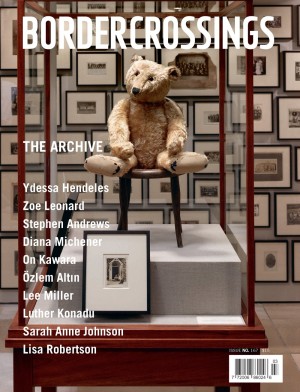The Québec Triennial
This first Québec Triennial, presented by the Museum of Contemporary Art in Montreal, has taken the bold step of focusing entirely on “emerging” artists, a move that defines the show demographically as well as geopolitically, being a survey that includes 38 Québec artists. The exhibition as a whole reveals the friendly approach to mass-media culture being taken by this current generation of “emergent” artists. The exhibition by way of its demographic definition (which in this epoch defines artists’ practice as international) is aligned with “newness” that now means access to globalized, international markets.
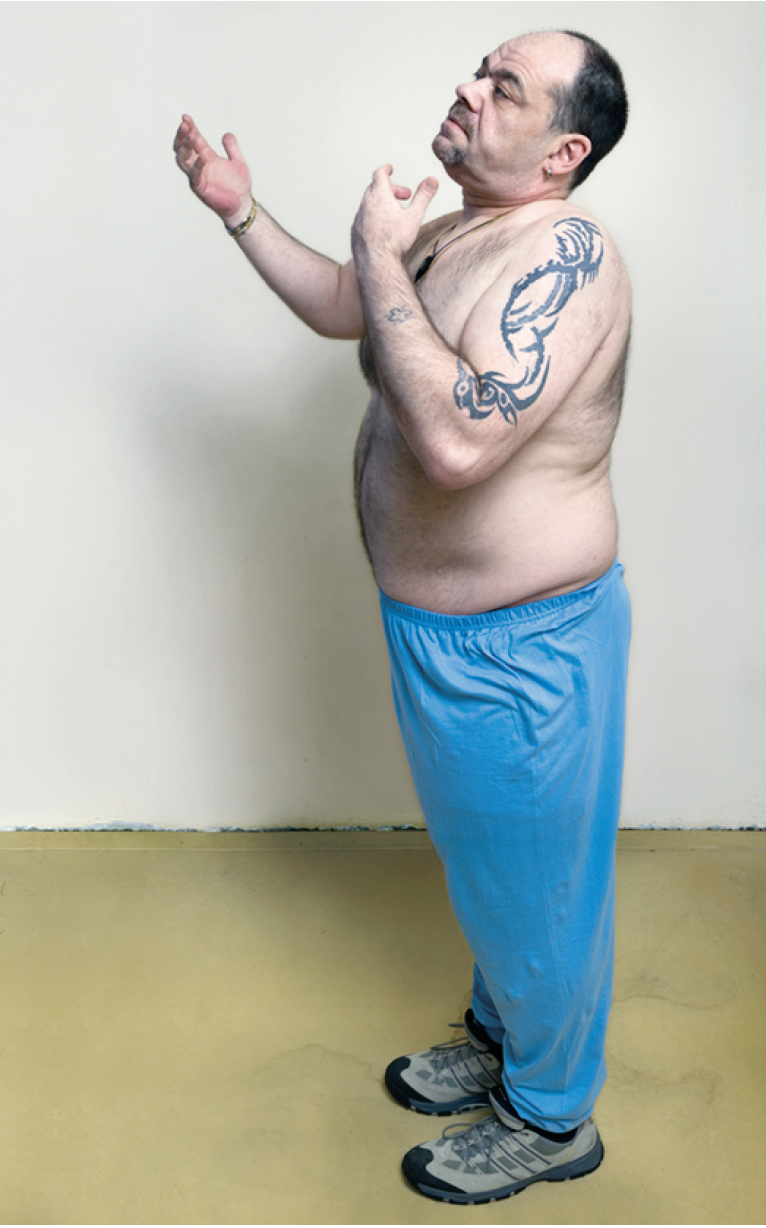
Romeo Gongora, André, 2007–08, digital colour print, 198 x 120 cm. Images courtesy the Musée d’art contemporain de Montreal.
There are various critical contexts that could be constructed in order to sort the show into successes and failures. One approach would be to prioritize the works that diverge from the exhibition’s formalist tendency. Amongst the few that do this was War Tourist by the Paris-based artist Emanuel Licha. This work juxtaposes the kind of banality that arises when descriptive language, already intrinsically repetitive, is deployed in commentaries. By repetition, they reduce situations of the utmost terror, pain or conflict to the level of flat cliché, exposing the true horror of mass media effects in consumer culture. War Tourist consists of five videos played continuously on five monitors with headsets for sound. Each is dedicated to visiting a particular site with a hired local guide. The sites include the museum at Auschwitz, war-damaged Sarajevo, hurricane-destroyed New Orleans, a riot-ravaged Parisian suburb and the nuclear accident scene of Chernobyl. In each case the guides’ clichéd comments note really good bullet holes or interesting bomb damage, houses magically washed miles by flood, or people left displaced and homeless by various sorts of destruction. Irrespective of the local language, the guide speaks English while subtitles “correct” any errors, emphasizing erosion of the local.
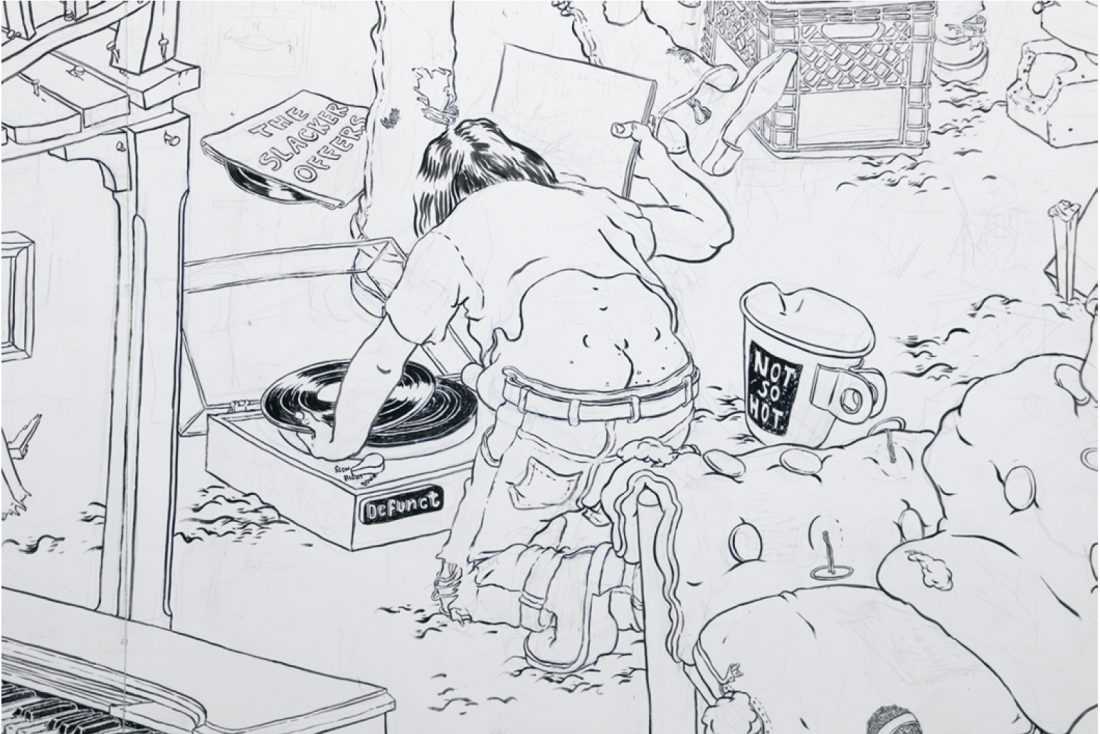
Adrian Norvid, Hermit Hamlet, 2008, detail, vinyl gouache (Flashe) on paper, 305.5 x 508 cm. Courtesy Joyce Yahouda Gallery, Montreal. Photo: Paul Litherland.
A second artist whose work seemed to fall outside the prevailing ethos is Romeo Gongora who presented a darkened room with a few panels leaning against walls. One at a time, a video image of a life-sized male figure emerged slowly, projected onto a dark panel. After a few moments of awkward silence, each man, dressed in an identical blue uniform, presented a re-enactment of his own speech to a judge or to his family from the jail cell holding him prisoner. The charges ranged from robbery to murder. In some cases the communication would present protestations of innocence, while in others apologies to families or victims. The factor of re-enactment plays with the ambiguities of trust and suspicion prevailing in the prisoner’s situation and in our situations as art viewers.
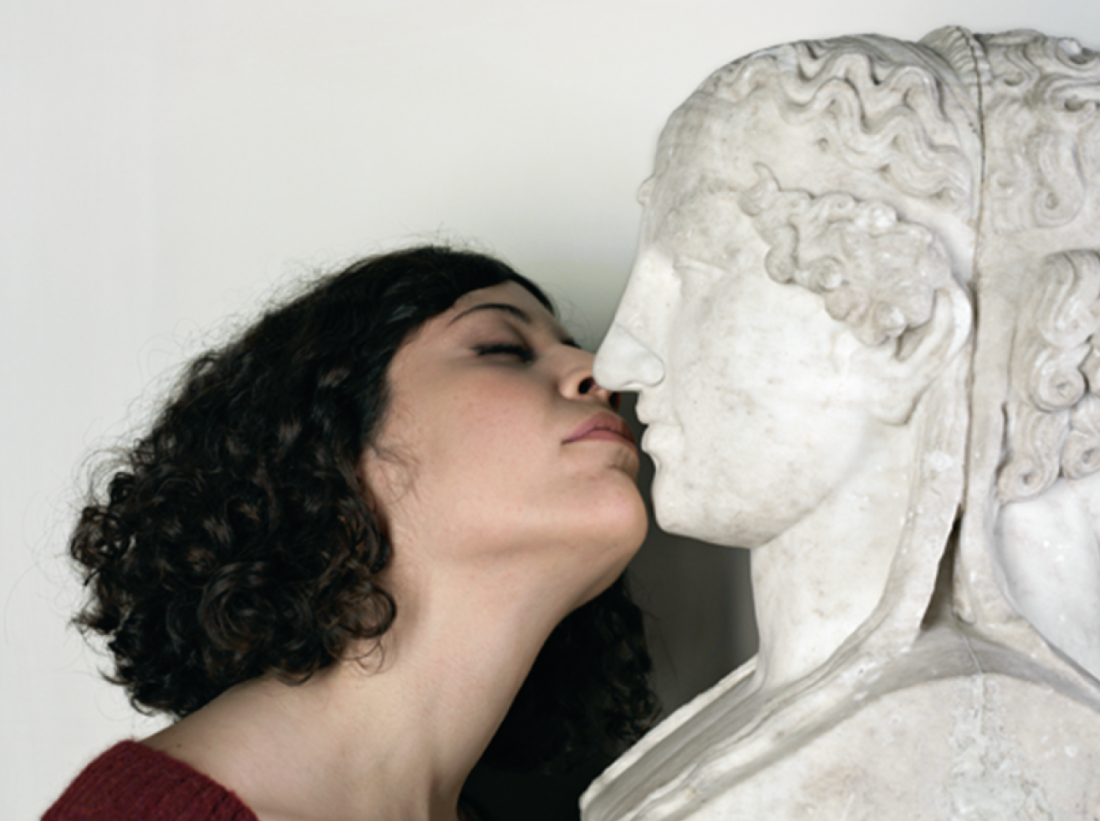
Adad Hannah, Aphrodite, 2008, digital colour print, 1/3, 101.6 x 135.9 cm. Image produced with the permission of the Prado Museum, Madrid. Courtesy Pierre-François Ouellette art contemporain, Montreal.
Bettina Hoffmann, a third artist working with video—and I have to admit I was predominantly drawn to the video works in this exhibition—presented a perceptually challenging piece in which the subject is ennui, and especially that pertaining to the time of adolescence. Her four-channel video installation sets a camera in motion through still images, with the result being a strange reversal of movement and stillness, a result that tends to provoke a bodily disequilibrium in the viewer.
Jon Knowles’s The Robert Smithson Record Collection is an intricate piece that builds on endlessly proliferating references that somehow manage to tie back to one specific moment when the artist, by chance, encountered a family member in a hospital. Apparently a work influenced by narrative techniques derived from recent cinema and from the format of blogging, this work connects Robert Smithson and Carl Andre with Alfred Stieglitz and Pink Floyd in a fantastic circuit of information chasing information through pop culture to high art.
Shifting attention from the artworks to the exhibition and its relationship with the cultural context of contemporary Québec reveals an ambitious and provocative project. As the curators have mentioned, this is a project that is taking some risks by questioning national culture through the forces of globalism.
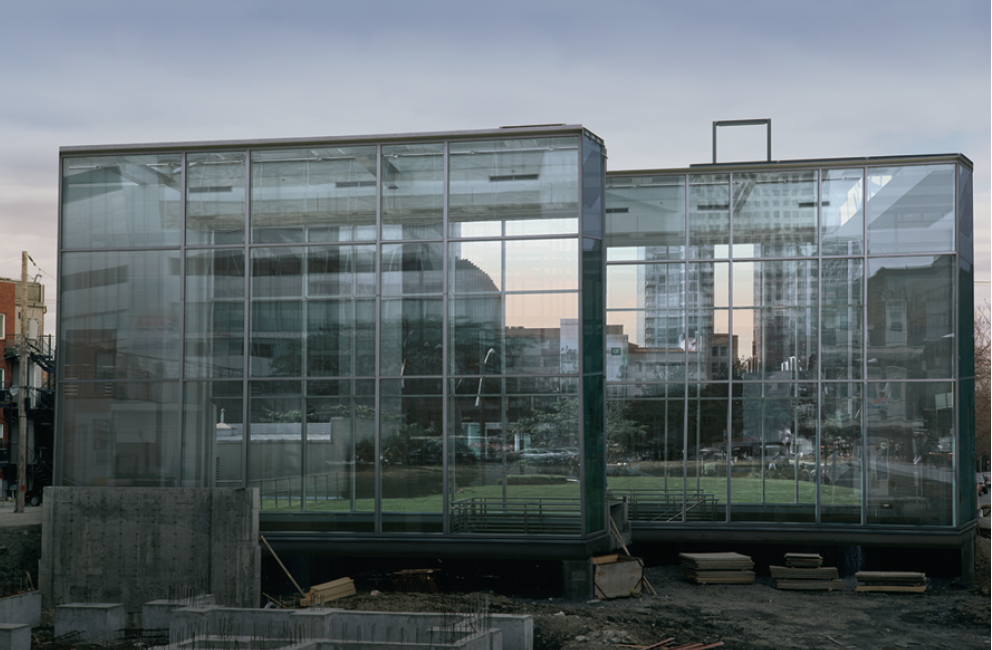
Isabelle Hayeur, Day Trading, 2006, inkjet print on laminated polyester, 2/5, 109 x 166 cm. Courtesy Pierre-François Ouellette art contemporain, Montreal.
What makes this important and interesting is that, first, it addresses the specificity of the venue (Québec); its title and format implies a national survey. Second, it is an intersection of the inevitably “political” dimension of a national survey in a globalized context, with the decision to present only the works of “emerging” artists to the exclusion of established figures. The convergence of these two factors is intriguing and has resulted in a show with strong relevance to the public debate around globalization and the internationalization of markets, and to questions of how belonging is constructed and boundaries are drawn around a specific culture. Many of the included artists have post-national CV’s; that is, they are from Berlin or Taiwan but live in Québec or have Québec origins but now live in New York, London or Paris, and move between various “homes.” The focus is thrown on a stock of artists emerging not into careers within a national frame but poised with the skills and attitudes potentially ready to carry them straight into the globalized market, and their curators, gallerists and collectors with them. With this current configuration, the exhibition seems to project the perhaps productive paradox of a globalized nation, but may risk defining as redundant the community’s established artists.
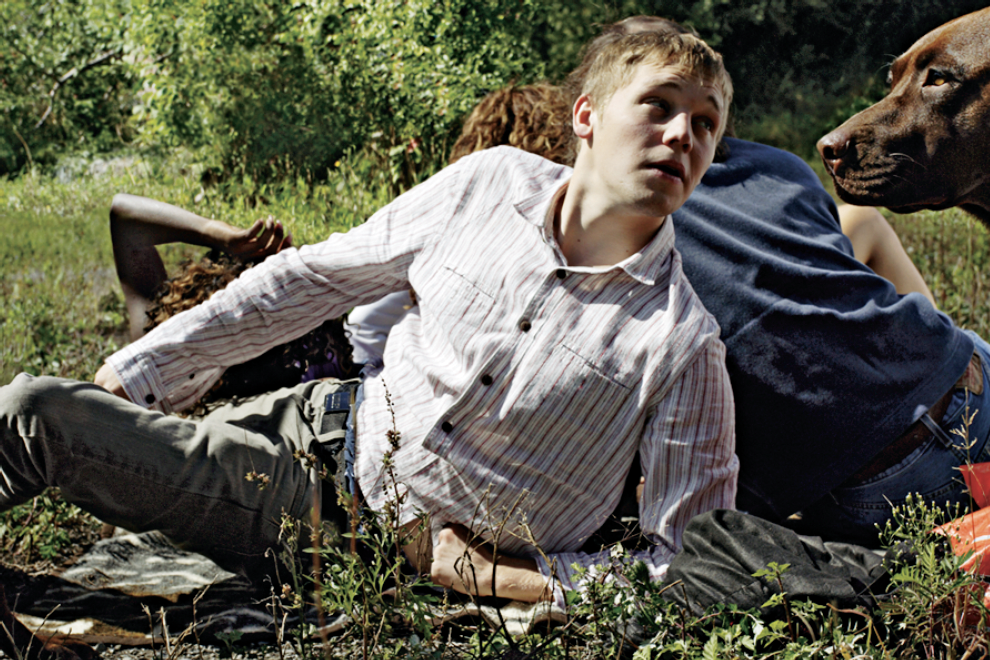
Bettina Hoff mann, Park, 2007, detail, digital colour prints (diptych), 114.3 x 76.2 cm each.
Strangely, although the use by artists of materials and techniques sampled from the circuits of our mass media environment is much in evidence here, the exhibition shows little interest in collaborative works or in the sort of works that literally drift in and out of quotidian space, concerns widespread in current art. There is also little evidence of any “post-studio” practice.
The installation has generously given each artist adequate space and placement, and the alignment of the various works with each other feels considered. The classic presentation emphasizes a conception of individually authored works existing in isolated harmony with their surroundings. However, as a survey of the present moment, this first Triennial is inevitably exciting, and its decisively realistic curatorial conception amplifies this. As a national survey whose inclusions in this instance demarcate a group, a commonality (emerging artists), this exhibition is boundary making while simultaneously exploring how belonging is constructed and status assigned. ■
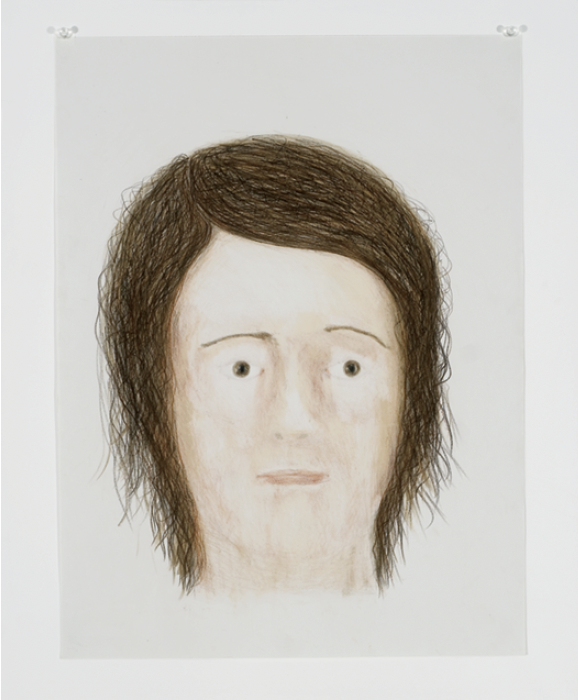
Raphaëlle de Groot, Après Luigina, from Tous ces visages, 2007–08, dimensions variable. Installation: drawings (coloured pencil, felt pen and dry pastel on paper), masks (coloured pencil, felt pen, watercolour, paper, aluminium tape), Polaroid photographs, video, sound, text, presentation furniture. Photo: Pierre Charrier.
The Québec Triennial was exhibited at the Montreal Museum of Contemporary Art from May 24 to September 7, 2008.
Stephen Horne is an artist and writer based in Montreal. Abandon Building, a selection of his writings, was published in Montreal this year by Eleven Press.

